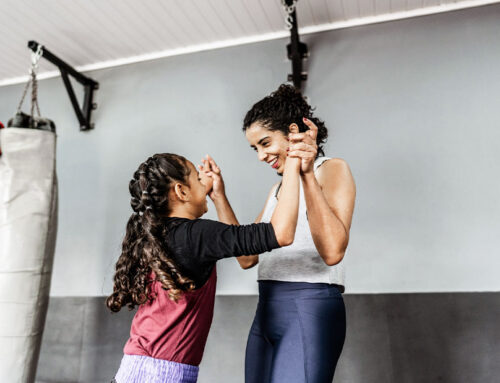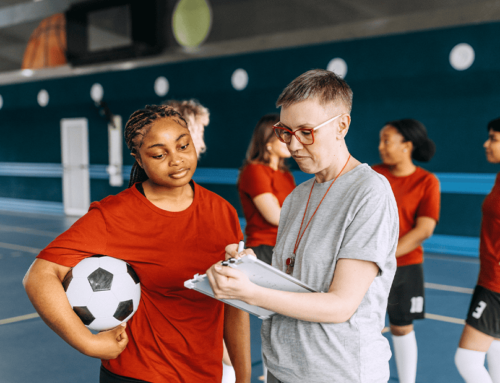How to Design Strength and Conditioning Programs for Youth Athletes
Sport-specific programs have become popular for training youth athletes. Yet strength and conditioning experts have begun to question the relevance of such training. Is it really needed? Are we doing a disservice to our athletes who may already specialize in one sport? I believe sport-specific training is useful, but only within the context of a well-rounded, generalized strength and conditioning program.
General Strength and Conditioning
A well-rounded approach to the program design may effectively assist the single-sport athlete in developing and maintaining a foundational level of fitness, strength and flexibility. Additionally, a generalized strength and conditioning program can help train movement patterns that are not required for a specific sport or activity. For example, athletes in sports that emphasize unidirectional rotation (e.g., baseball and golf) may benefit from training rotational patterns in the opposite direction, because they may enhance the ability to decelerate and change direction. Generalized training programs are also effective for allowing athletes to physically and mentally recover from the rigors of pre-season and in-season competition.
RELATED: Youth Strength Training Do’s and Don’ts
Sport-Specific Training
Although I appreciate the value of a well-rounded, generalized strength and conditioning program, I believe it is equally important to recognize the unique demands of one’s individual sport. For example, it may not be beneficial to attempt to correct the hamstring flexibility of the dominant leg of a soccer player, since this may be an adaptive tissue response necessary for the demands of the sport or position. However, it is important to ensure that the athlete possesses the appropriate stability and motor control to account for excessive range of motion.
Another example is the baseball player who possesses an increased degree of external rotation of his dominant throwing shoulder. This is a common adaptive tissue response to the repetitive loads and demands of the throwing motion. However, the strength and conditioning coach should also assess the degree of internal rotation in the dominant throwing shoulder, because it is common for baseball players to have diminished internal rotation (a condition referred to as glenohumeral internal rotational deficit or GIRD), which may lead to changes in total arc of motion between the shoulders. Either a loss of internal rotation greater than 10 degrees between sides or loss of 5 degree in total arc has been correlated to an increased risk of shoulder-related injuries in baseball players. At the same time, coaches must also be aware of the overall impact throwing has on the kinetic chain. Baseball players also experience an asymmetrical change in trunk rotation and loss of internal rotation of the lead (front) hip and external rotation of the rear (trail leg) hip, respectively.
It may not be appropriate to incorporate weighted balls, bats or practice year-round, but coaches and trainers should be aware of common adaptations, imbalances and/or compensations that take place in specific sports. Recognizing them allows for the appropriate “movement preparation” work in areas that require soft-tissue techniques or “clearing” prior to engaging in activity.
RELATED: Three Questions To Ask Before Starting a Youth Sports Training Program
RECOMMENDED FOR YOU
MOST POPULAR
How to Design Strength and Conditioning Programs for Youth Athletes
Sport-specific programs have become popular for training youth athletes. Yet strength and conditioning experts have begun to question the relevance of such training. Is it really needed? Are we doing a disservice to our athletes who may already specialize in one sport? I believe sport-specific training is useful, but only within the context of a well-rounded, generalized strength and conditioning program.
General Strength and Conditioning
A well-rounded approach to the program design may effectively assist the single-sport athlete in developing and maintaining a foundational level of fitness, strength and flexibility. Additionally, a generalized strength and conditioning program can help train movement patterns that are not required for a specific sport or activity. For example, athletes in sports that emphasize unidirectional rotation (e.g., baseball and golf) may benefit from training rotational patterns in the opposite direction, because they may enhance the ability to decelerate and change direction. Generalized training programs are also effective for allowing athletes to physically and mentally recover from the rigors of pre-season and in-season competition.
RELATED: Youth Strength Training Do’s and Don’ts
Sport-Specific Training
Although I appreciate the value of a well-rounded, generalized strength and conditioning program, I believe it is equally important to recognize the unique demands of one’s individual sport. For example, it may not be beneficial to attempt to correct the hamstring flexibility of the dominant leg of a soccer player, since this may be an adaptive tissue response necessary for the demands of the sport or position. However, it is important to ensure that the athlete possesses the appropriate stability and motor control to account for excessive range of motion.
Another example is the baseball player who possesses an increased degree of external rotation of his dominant throwing shoulder. This is a common adaptive tissue response to the repetitive loads and demands of the throwing motion. However, the strength and conditioning coach should also assess the degree of internal rotation in the dominant throwing shoulder, because it is common for baseball players to have diminished internal rotation (a condition referred to as glenohumeral internal rotational deficit or GIRD), which may lead to changes in total arc of motion between the shoulders. Either a loss of internal rotation greater than 10 degrees between sides or loss of 5 degree in total arc has been correlated to an increased risk of shoulder-related injuries in baseball players. At the same time, coaches must also be aware of the overall impact throwing has on the kinetic chain. Baseball players also experience an asymmetrical change in trunk rotation and loss of internal rotation of the lead (front) hip and external rotation of the rear (trail leg) hip, respectively.
It may not be appropriate to incorporate weighted balls, bats or practice year-round, but coaches and trainers should be aware of common adaptations, imbalances and/or compensations that take place in specific sports. Recognizing them allows for the appropriate “movement preparation” work in areas that require soft-tissue techniques or “clearing” prior to engaging in activity.
RELATED: Three Questions To Ask Before Starting a Youth Sports Training Program










